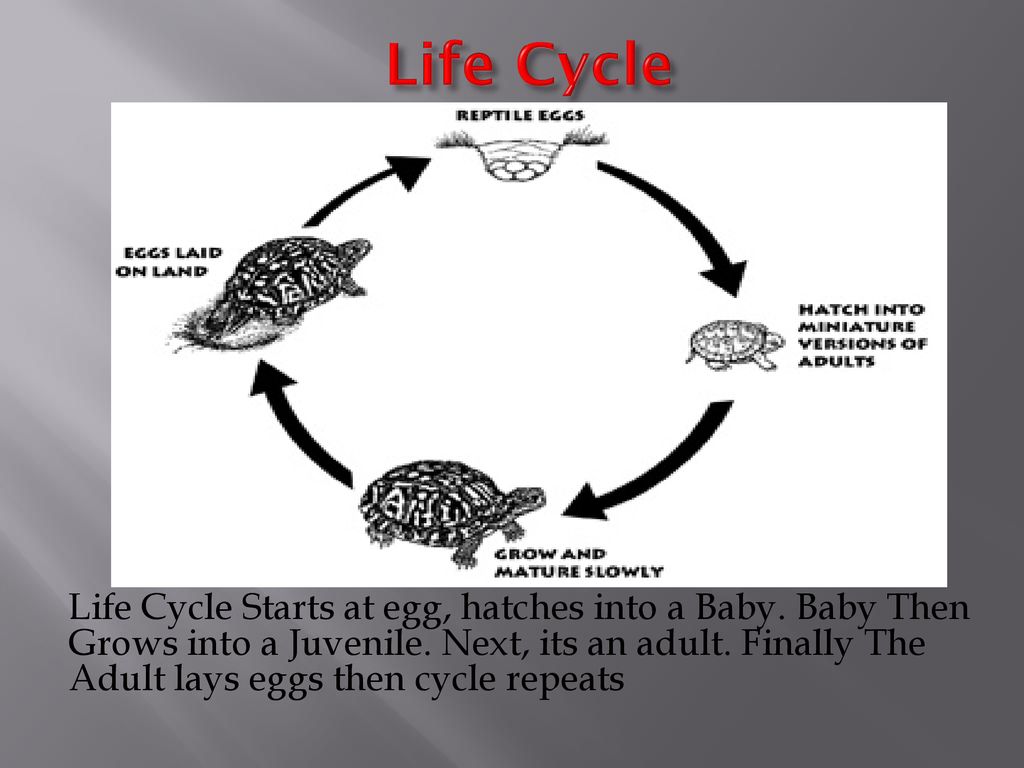
A diagrammatic representation of the complete life cycle of H. Turtles follow a routine cycle of day and night.

This should be mimicked with 12-hour cycles in captivity.
What is the life cycle of a snapping turtle. Wild snapping turtles live approximately three decades with those in captivity sometimes living longer. Vulnerable when young snapping turtles may be eaten by mid-sized mammals such as raccoons various snakes and large birds. A snapping turtles estimated lifespan is around 30-45 years in the wild whereas it can be extended up to 100 years with care in captivity.
Being a vulnerable creature as a hatchling they often get eaten by predators or hit by cars. Overall we can say that a. Assuming they make it to adulthood snapping turtles of both species have fairly long lives.
Common snapping turtles typically live to be 30 years old in the wild and up to 47 years old in. In the wild Snapping turtles tend to live from 20 to 50 years on average but those in captivity have been known to live longer. Some researchers even speculate that Snapping turtles could live to be 150 years old.
The life of a Snapping turtle begins when they hatch from their egg. Snapping turtles often live more than 100 years with a maximum theoretical life span of 170 years. While it is impossible to truly know a snapping turtles age unless you know the precise date it hatched you can make an educated guess using its shell which scientists call the carapace.
How long do snapping turtles live. The common snapping turtle lives a maximum of 100 years in the wild and usually between 30 to 45 years in captivity. The alligator snapping turtle lives a maximum of 200 years in the wild and typically between 20 and 70 years in captivity.
Every pet owner wants their pet to live a long and comfortable life. Snapping turtles mate between April and November and are most active in breeding during warmer months. They begin courtship by facing one another and moving their heads from side to side.
Mating begins with the male mounting the female and adjusting his tail beneath the females to allow the cloacal openings to touch. Snapping turtles are large freshwater species of aquatic turtles that are known for well snappingThey have powerful jaws and sharp beaks that are known for their characteristic ability to snap closed with incredible speed. There are two living species of snapping turtle the common and the alligatorThe largest species the alligator snapping turtle is also one of the heaviest freshwater.
Turtles follow a routine cycle of day and night. This should be mimicked with 12-hour cycles in captivity. This can be managed using a long UVB bulb.
A high-quality UVB bulb is necessary to provide lighting cycles stimulate Vitamin D production and. Reproductive maturity is reached at 11 to 13 years. The turtles typical lifespan in the wild is between 11 and 45 years but captive alligator snapping turtles have lived to 70 years of age.
The life cycle of a snapping turtle by Julian May 1973 Distributed by Childrens Press edition in English The life cycle of a snapping turtle. 1973 edition Open Library. Experimental infection was achieved by allowing leeches with merozoites in their proboscis to feed on a laboratory-reared snapping turtle and gamonts were seen in the peripheral blood of this turtle 12 weeks postfeeding.
A diagrammatic representation of the complete life cycle of H. Balli is shown in Figure 412. Snapping turtles bury their eggs deep in the sand or mud and have been known to travel up to 10 miles in their search for an appropriate nesting site.
Females lay up to 80 eggs at a time with 20 to 30 eggs being more common. Eggs take nine to 18 weeks to hatch depending on weather conditions. Snapping turtles provide no care for their young.
The first part of a sea turtles life cycle is the egg. Sea turtles can lay up to 200 eggs at a time. The eggs are laid on the shore.
When the eggs hatch they crawl out of the shell and head for water. At that point the eggs are on their own with no mom or dad. Fortunately North American populations of common snapping turtle are extremely robust thanks to the turtles long lifespan and adaptability to a variety of environments.
While they are not endangered it is worth noting that few hatchlings survive until adulthood. Life Cycle of A Sea Turtle. The sea turtle life cycle starts when a female lays its eggs on a nesting beach usually in the tropics.
From six weeks to two months later depending on the species a tiny hatchling makes its way to the surface of the sand and heads to the water dodging every predator imaginable. What is the sea turtle life cycle.